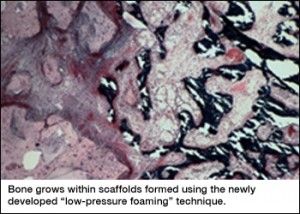According to a Swedish research team at Luleå University of Technology, it’s possible to create cellulose nanofibres from sludge. Well, it’s a particular kind of sludge. From the Feb. 16, 2012 news item on Nanowerk,
For example, at one single cellulose manufacturer, Domsjö Fabrikerna in Sweden, the producer of special cellulose, which is used to in the manufacturing of viscose fibers, causes one thousand tons of sludge as a residue each year.
…
A few years ago, cellulose industries in Sweden, disposed some of their waste as sludge into the ocean. It is now prohibited, and the sludge is stored in large tanks on land. This particular cellulose sludge makes it possible, to produce, so far, the most profitable production of cellulose nanofibres from bio-residue products.
The yield of the manufacture of cellulose nanofibres from the sludge is 95%, compared with cellulose nanofiber production from wood chips 48%, lignin residues 48%, carrot residues of 20%, barley 14% and grass 13%. [emphases mine] “The separation of cellulose nanofibres from bioresidues is energy demanding but when we separate the waste from Domsjö, the energy consumption is lower. The special cellulose from Domsjö has very small size and it also has high cellulose content and therefore the fibers do not need to be chemically pre-treated before the production of cellulose nanofibers,” says Professor Kristiina Oksman.
This is interesting news especially in light of the interview with Jean Moreau (president of CelluForce, a company which manufactures nanocrystalline cellulose [NCC] in Québec, Canada) that I heard yesterday where there was some discussion as to what type of wood is needed to produce it.
In an interview with Dr. Richard Berry (now with CelluForce but with FPInnovations at the time), I asked where the NCC comes from (my Aug. 27, 2010 posting),
Q: Does the process use up the entire log or are parts of it left over? What happens to any leftover bits?
A: We are starting from the bleached chemical pulp which is, to a large extent, cellulose. The left over bits have actually been processed as part of the chemical pulp mill processes. The acid used is recovered and reused and the sugars are converted into other products; in the demonstration plant they will be converted into biogas.
I’m not sure when the ‘spiderphone’ interview took place but it seems to be prior to the manufacturing/demonstration plant’s opening earlier this year (2012). For the curious, here’s a link to the 48 min. interview (roughly 25 mins. Moreau and roughly 25 mins. of questions from callers), http://ccc.spiderphone.com/RealCast/9597937293/Flashcast.html. (Thanks again to David Rougley for dropping by to leave a comment and this link to the interview on an earlier nanocellulose fibre posting [March 28, 2011].)
Getting back to the main event, the Swedish research is part of a larger project called Bio4Energy and you can find out more about that here.
Bravo to the Swedes for making use of sludge!

